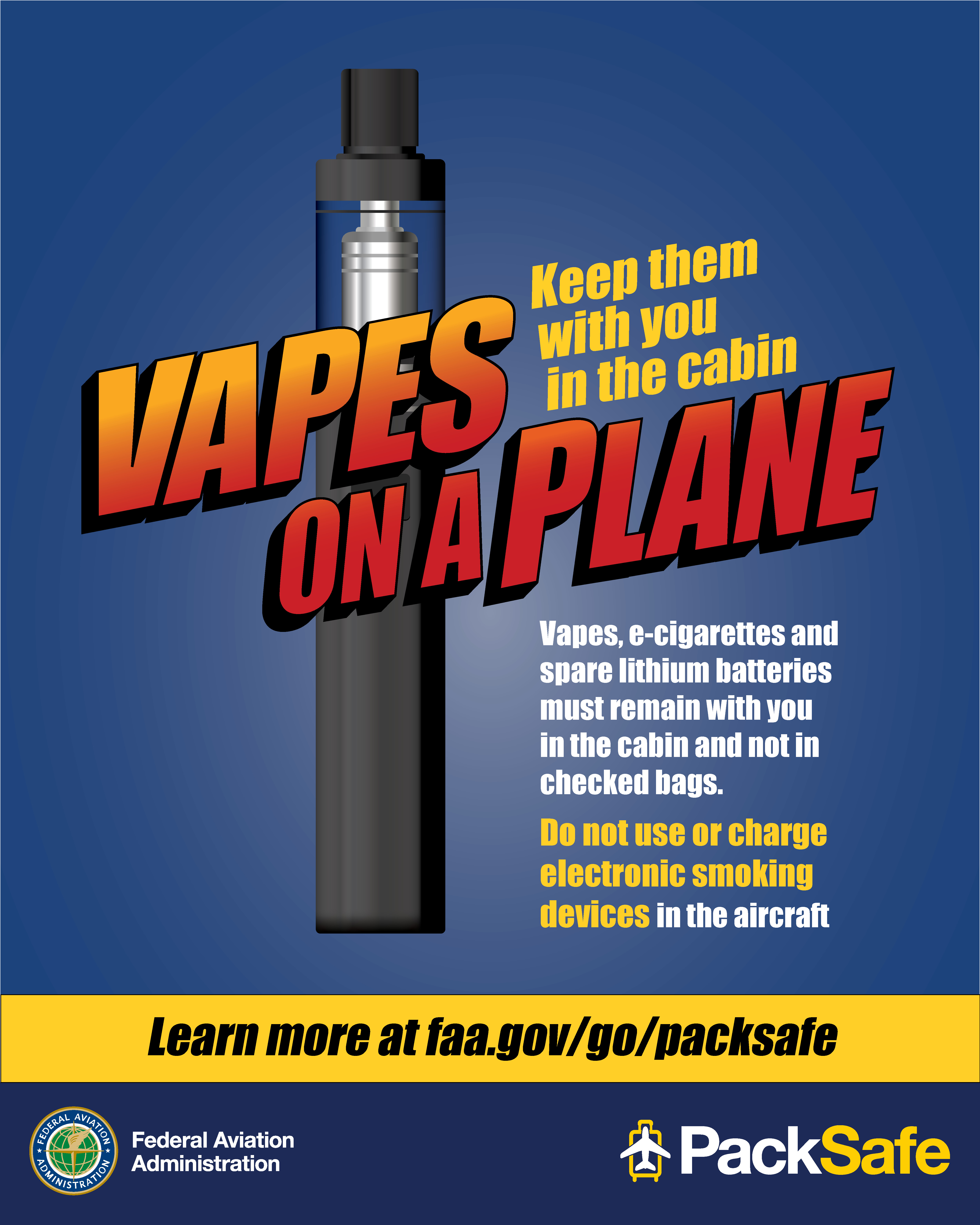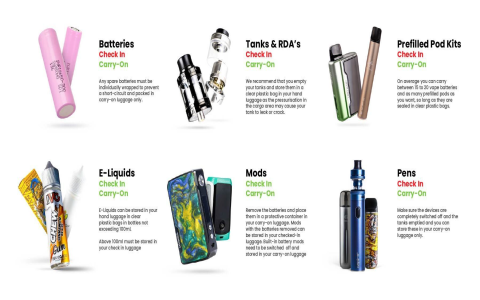Transporting electronic cigarettes and vaping devices on airplanes requires strict adherence to aviation safety regulations worldwide. Below are the key policies travelers must know:
Carry-on Baggage Only
All vaping devices, including e-cigarettes, vape pens, and spare batteries must be carried in your cabin luggage. They are strictly prohibited in checked baggage due to lithium battery fire risks.

Battery Safety Rules
- Devices must be completely powered off (accidental activation protection).
- Individual loose batteries require protective cases or terminal covers.
- Battery power limits apply: typically under 100 watt-hours per battery.
E-liquid Restrictions
- E-juice containers follow TSA liquid rules: 100ml (3.4oz) maximum per bottle.
- All bottles must fit in a single quart-sized transparent bag.
- Nicotine-free vape juices have identical restrictions.
Airport & Aircraft Usage
Vaping is banned inside airports (except designated smoking areas) and strictly prohibited on all flights globally. Attempting to vape in aircraft lavatories triggers smoke alarms and may result in penalties.
International Considerations
- Research destination country laws: Some nations (e.g., Thailand, Singapore) impose fines or imprisonment for vape possession.
- Transit hub policies vary: Dubai and Hong Kong confiscate devices if found during security screening.
Critical Summary: Pack vapes in carry-on only. Follow lithium battery and e-liquid limits. Never activate devices onboard. Verify destination country legality before departure. Airlines update policies frequently; always confirm with your carrier 72 hours pre-flight.









